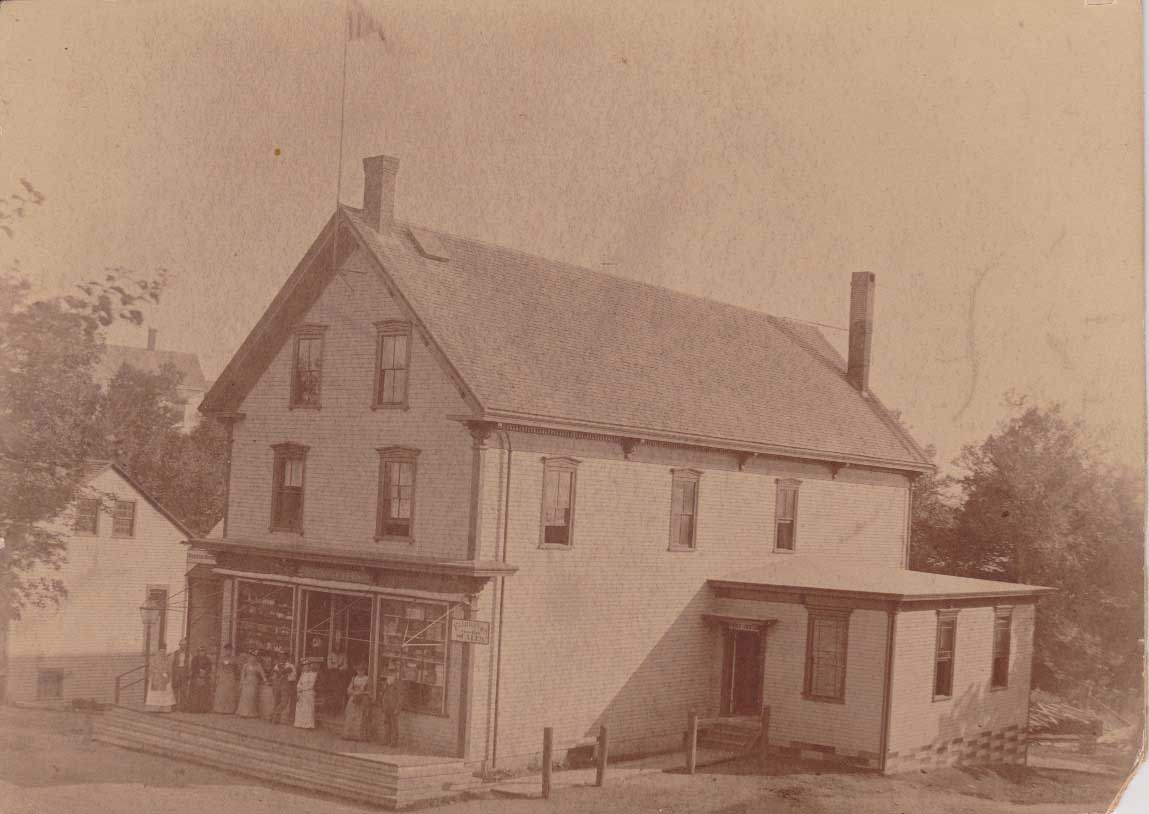Sargentville is a Village (GOV.3)
Describes origin of the Sargentville name and its relationship to the town of Sedgwick. Includes a description of the past and present boundaries of the village.
Sargentville is a village within the town of Sedgwick.
In the Life and Times in a Coastal Village Sedgwick, Maine, 1789-1989 published by the 1989 Sedgwick Bicentennial Committee they state:
“By the 1850s four distinct communities had developed within the boundaries of Sedgwick. Each had its own Post Office, church/chapel, stores, schools and professional services and operated quite separately from each other. One, around the mouth of the Benjamin River was referred to as “The Village”. Another was at North Sedgwick and was called that. A third was westward along the Reach, near Billings Cove. It was known as “Sargentville”. The last was in the northwestern corner of the town bordering on the Bagaduce River. Its residents, for the most part, were descendants of the French and Indian War soldier Joshua Gray, who had been at Ft. Pownal 1759-62, and who had settled in [Township] Number Four around 1768. Quite appropriately, it was known as “Graytown”. It is now referred to as West Sedgwick.
The coming of the automobile and the improvement in roads made it unnecessary and uneconomical for these separate communities to maintain their self-sufficiency, and while three of them still have their churches, and two their Post Offices, the trend appears to be toward one overall community, largely residential, having but one school, and doing most of its professional and financial services out of town.”1
The Origin of the name “Sargentville”:
In her book, Abby: An Autobiography, Abby Sargent tells the story that is family tradition:
“Thomas Sargent, the pioneer of the Sargent family, did not come to Sedgwick until 1817, although he had served as a surgeon at Castine during the revolution….He, his wife and eleven children settled in Sedgwick Village.
Wyer Groves Sargent, the second child of Thomas, mailed to Hannibal Hamlin (who was vice-president in 1860-1864) a requisition to have [a Post Office in] our part of town named South Sedgwick. The legislative committee stated, “Since every man who signed the petition is a Sargent, why should it not be called Sargentville?” And so it became, and always will be.”2
Though it is possible that, as the family story goes, a legislative committee made the name change, it is also likely that this area of Sedgwick was already, informally, called Sargentville due to the presence of so many residents of that name, much as was true of Graytown and Grindleville.
An on-line check of post office naming conventions lead to the following information in the National Archives web site; “Before 1891 the Post Office Department had no written policies about post office names. Post office names were derived from several sources, including names of towns, townships, neighborhoods, crossroads, or from the postmaster’s name or place of business.”3 It appears that George Myrick Sargent, Wyer’s brother, submitted the post office documents in 1854 and, in keeping with the custom of the time, it would have been quite reasonable to call this branch the Sargentville Post Office. The post office was approved and the documents were returned in February of 1855.4 George was the first Sargentville postmaster.
We may never know all the details of the naming of Sargentville but that designation became public with the naming of the post office.
Where is Sargentville?
It may help to keep in mind that Sargentville has never been a formally incorporated or surveyed place. It was and is a village, a cluster of people and homes separated by distance and, originally, limited transportation from others in the town of Sedgwick.
In the years since the 1989 Bicentennial the distinction between the communities within the town of Sedgwick have continued to blur but today (2016) the general consensus is that Sargentville runs along the Reach from the intersection of Old Steamboat and Reach Roads, includes all of Byard Point as well as Herrick Road to the Brooksville town line, and continues up along Caterpillar Hill Road to the middle or top of the hill.
According to Sylvia Conner Wardwell, life-long resident and historian5, Virginia Saunders Simmons, who has lived all of her 87 years in this area6, and Abby Sargent Neese, as detailed in her book7, Sargentville originally continued over Caterpillar Hill and up to the intersect of routes 15 and 75.
______________________________
1 Personal communication with Sylvia Wardwell, Mar. 11, 2016
2 Personal Communication with Virginia Simmons, Mar. 10, 2016
3 Neese, Abby Sargent, Sargentville. Lest We Forget, Lincoln County Publishing Co., Newcastle, ME., 1994, pg. 105.
4 https://www.archives.gov/research/post-offices/#ponames
5 Sedgwick, Maine Bicentennial 1763-1963, Published by the Bicentennial Committee, page 41.
6 Bicentennial Committee, Life and Times in a Coastal Village Sedgwick, Maine 1789-1989, page 38.
7 Neese, Abby, Abby: An Autobiography, Courier-Gazette, Inc., Rockland, Maine, 1987, Introduction.

